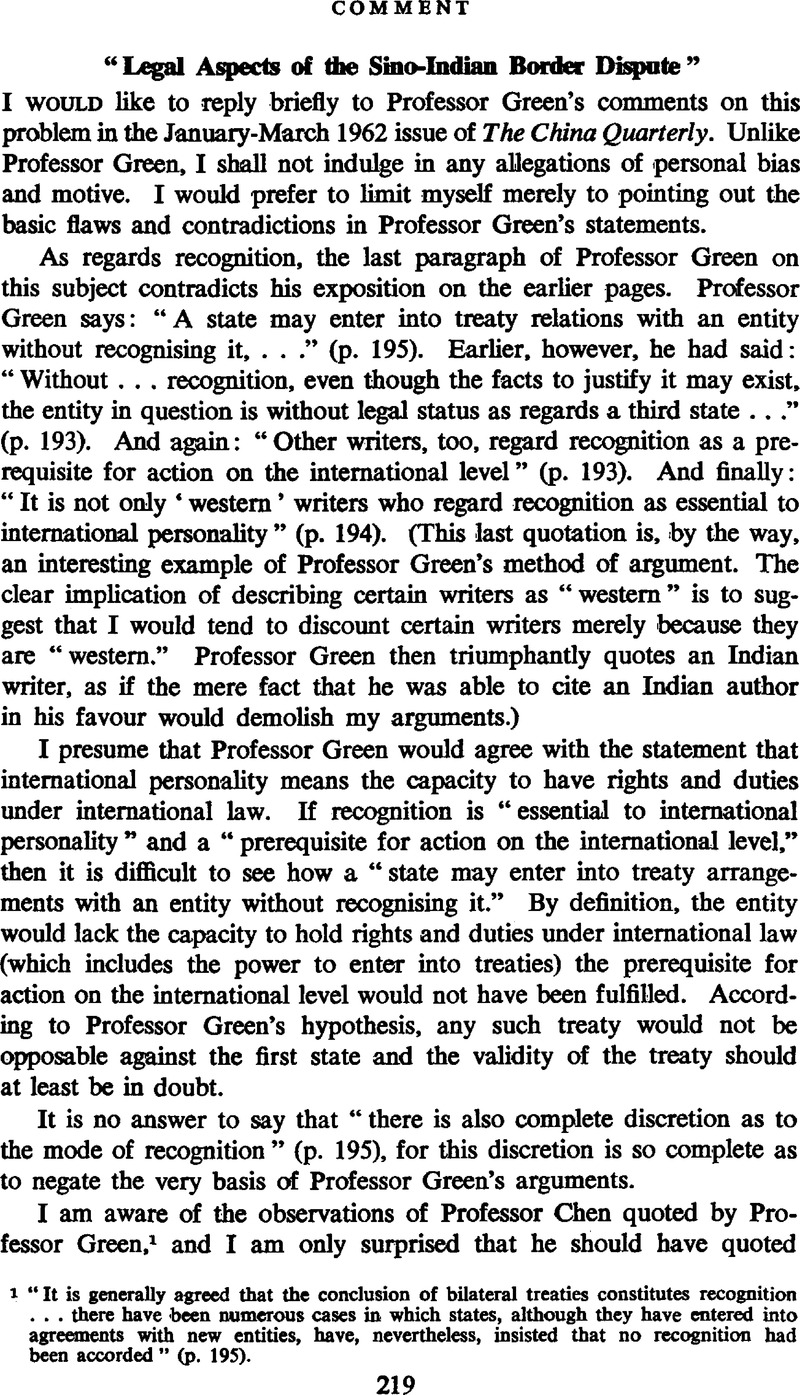No CrossRef data available.
Published online by Cambridge University Press: 17 February 2009

1 “It is generally agreed that the conclusion of bilateral treaties constitutes recognition … there have been numerous cases in which states, although they have entered into agreements with new entities, have, nevertheless, insisted that no recognition had been accorded” (p. 195).
2 Chen, T. C. (Ed. Green, L. C.), The International Law of Recognition (London: 1951), p. 193.Google Scholar
3 “As international law deals with actual conditions, it recognises the fact that there are states not in all respects independent that maintain international relations, to a greater or lesser extent, according to the degree of their dependence.” Moore, , International Law Digest, Vol. I, 1906, p. 18.Google Scholar
4 Cited in Rao, Krishna, “The Sino-Indian Boundary Question and International Law,” 11, International and Comparative Law Quarterly, 04 1962.Google Scholar For a detailed exposition of the legal aspects of the Sino-Indian border dispute, readers are referred to Dr. Krishna Rao's article.
5 Scelle, G., “Studies on the Eastern Question,” 5, American Journal of International Law, 1911, pp. 680–697.CrossRefGoogle Scholar
6 Brown, P. M., “The Recognition of Israel,” 42, American Journal of International Law, 1948, pp. 620–626.CrossRefGoogle Scholar
7 International Commission of Jurists, The Question of Tibet and the Rule of Law, 1959, p. 84Google Scholar; China Year Book (Ed. H. G. W. Woodhead), 1921–1922, p. 611.Google Scholar
8 e.g., see the reference to the Simla Conference and to the treaty between Tibet and Nepal in my comments in The China Quarterly, 10–12 1961, pp. 204–205.Google Scholar